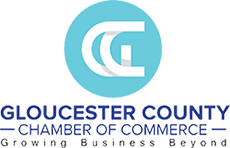Plugged In and Showing Out: How Digital Tools Are Flipping the Script on Trade Show Marketing
Trade shows and live events haven’t lost their edge—they’ve just evolved. What used to be all about booth graphics and printed flyers has morphed into something far more dynamic, as brands now lean into digital tools to create immersive, measurable, and ongoing experiences. The real magic happens not just on the show floor but in the pixels and platforms that keep people engaged before, during, and long after the event ends. For marketers looking to punch above their weight at events, integrating digital strategies isn’t just helpful—it’s the difference between a handshake and a headline.
Starting Strong: Digital Lead-Up Sets the Stage
The weeks leading up to a trade show offer a rare window of time where anticipation and intent are high—and too many brands coast right past it. Digital campaigns that tease what’s coming, offer scheduling links for meetings, or spotlight exclusive content can build pre-show buzz that pays off in foot traffic and follow-ups. Tools like LinkedIn ads, email automation platforms, and short-form video can extend the runway for brand storytelling before boots even hit the ground. The goal isn’t to overload the audience with information, but to spark just enough curiosity that attendees actively seek out the brand once the doors open.
QR Codes Aren’t Dead—They’re Just Smarter
Once considered a clunky gimmick, QR codes have quietly become utility powerhouses for smart event marketers. By integrating QR access points into product displays, handouts, or even wearable items like lanyards or badges, brands can create a frictionless bridge between the physical booth and the digital world. These codes can launch videos, surveys, or sign-ups—no app download required. When executed with intention and tied to compelling content, they turn a booth visit into a data-rich moment of engagement.
Design Tools That Bring Depth to the Booth
Trade show visuals used to rely heavily on static imagery, but now graphic design tools are turning flat assets into sculpted, immersive experiences. By converting 2D artwork into 3D objects using features like extrusion, rotation, material textures, and lighting controls, marketers can simulate lifelike product displays or branded environments before anything is physically built. These dynamic visuals not only elevate the physical booth aesthetic but also breathe new life into digital collateral, powering interactive presentations or AR-driven storytelling. With the rise of AI photo editing, even less technically inclined teams can now manipulate and enhance visual elements faster, helping them deliver a higher-impact experience across both virtual and real-world platforms.
Social Media Is Not Just a Side Dish
Social channels too often get relegated to post-event photo dumps or generic booth selfies, when they could be running point on the entire experience. Live tweeting, Instagram stories, and TikTok content give real-time texture to what’s happening on the floor and bring the energy beyond the convention center. These platforms become amplifiers for speakers, demos, and even spontaneous encounters, letting off-site followers feel like they’re part of the action. Partnering with influencers or even internal evangelists can inject authenticity and reach, turning ordinary moments into viral impressions.
Virtual Twins of Physical Booths Extend Reach
Not every prospect will be able to make it to the event, but that doesn’t mean they should miss the experience. Forward-thinking brands are creating digital twins of their physical booths—interactive web environments that mimic the in-person layout and content. These can house video tours, downloadable materials, meeting scheduling tools, and even live chat features. It’s more than a backup—it’s a second stage for storytelling that respects the realities of geography and time zones while keeping doors open to future conversations.
Post-Event Follow-Up Becomes a Multimedia Encore
The worst time to go silent is right after the event ends. Brands that use digital tools to craft thoughtful, multimedia follow-ups stand a better chance of staying top-of-mind when decisions get made. This might be a recap video, a thank-you email with curated links, or even a personalized note with insights pulled from booth conversations or demo interactions. The point is to extend the conversation with purpose, not pester for attention. When follow-up feels more like a continuation and less like a cold call, conversion rates speak for themselves.
The end of the show doesn’t mean the story’s over. The best trade show strategies are those that treat digital not as an afterthought but as the connective tissue tying every touchpoint together—from first click to final deal. These tools don’t replace the power of in-person interaction; they supercharge it, ensuring the energy and investment of a single event live on far beyond its footprint. Brands that embrace this hybrid mindset won’t just show up—they’ll stand out.
Discover unparalleled networking and growth opportunities with the Gloucester County Chamber of Commerce, where your business can thrive through exclusive events, professional development, and a vibrant community of leaders!

